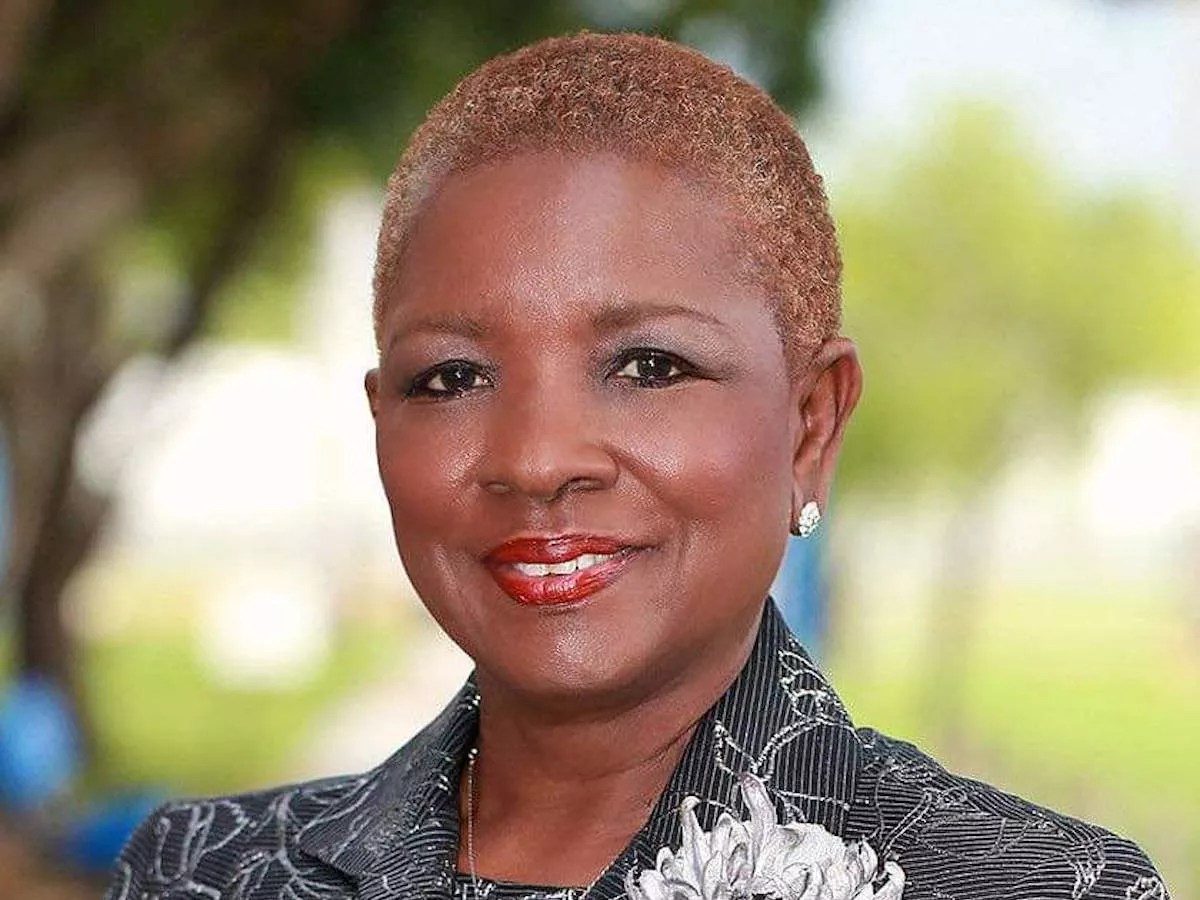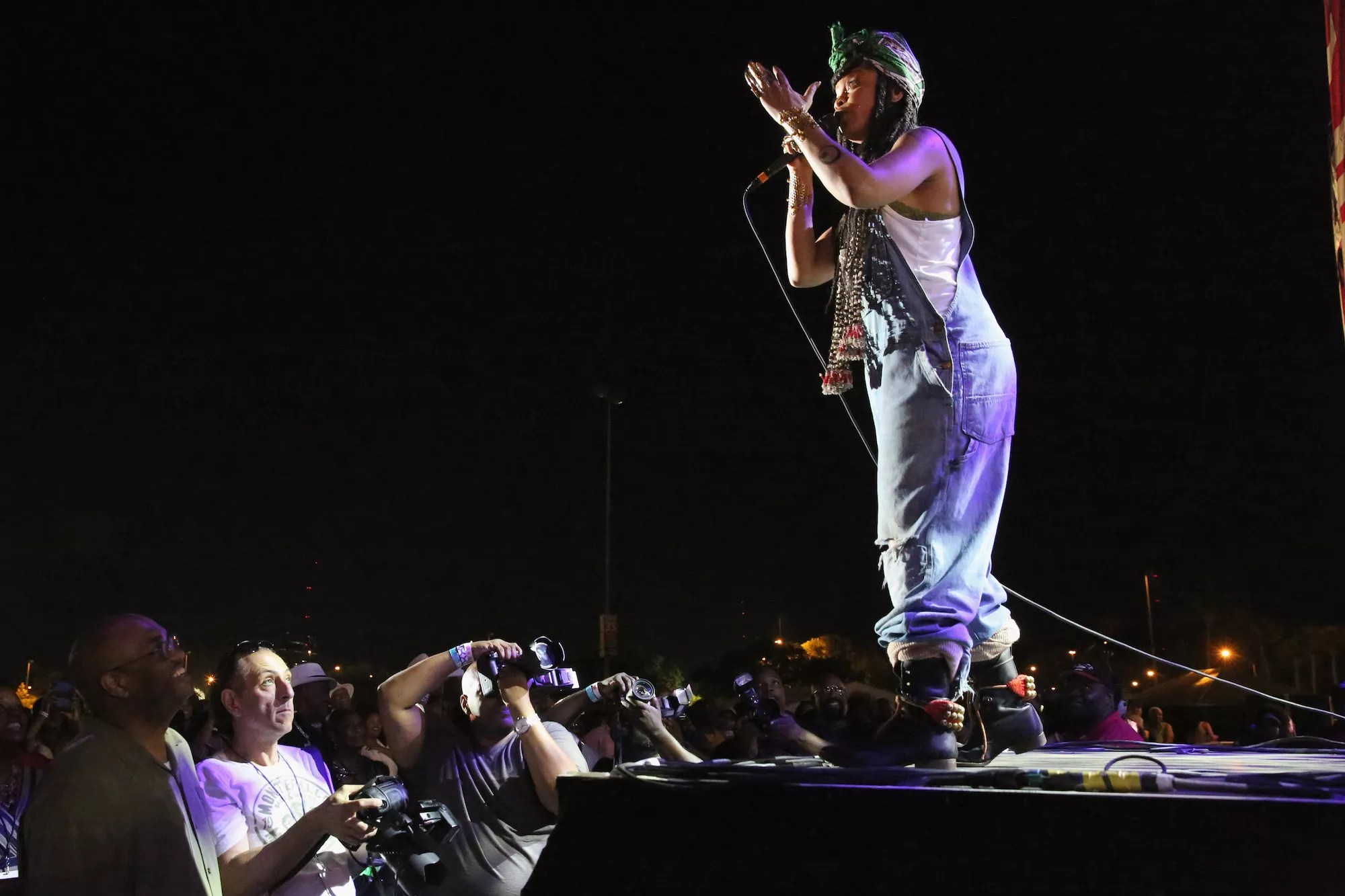
Shirley Gibson photo

Audio By Carbonatix
On May 13, 2003, Miami-Dade welcomed its newest municipality after the area historically known as Carol City incorporated into the City of Miami Gardens, becoming Florida’s largest Black-majority city.
The push to self-govern came after decades of residents feeling like they weren’t in control of their neighborhood, including the controversial decision to build Joe Robbie Stadium (now known as Hard Rock Stadium), which opened in 1987, in the mostly sleepy bedroom community. The decision by county leaders to go forward with the project felt similar to the decision to construct I-95 through Overtown, Miami’s historically Black neighborhood, decimating the once-burgeoning area.
Helping lead the charge to incorporate was Shirley Gibson, who would eventually become Miami Garden’s first mayor. She wanted to make history and finally put Miami Gardens on the map.
“It hasn’t been an easy ride,” Gibson tells New Times. “If we had the opportunity to make those decisions by voting and to be the ones to be in control of the funds, we could use it to utilize our community.”
According to historian Marvin Dunn, author of Black Miami in the Twentieth Century, the area that now makes up the City of Miami Gardens wasn’t always home to a Black majority. The area’s demographics skewed white, but the Black residents searching for a middle-class neighborhood with homes at affordable prices didn’t have to look any further than Carol City. It was an attractive alternative to other Black-majority areas in Miami-Dade, like Liberty City and Overtown, and by the 1980s, the area was home to primarily Black residents.
Dunn’s family first moved into Bunche Park, one of the neighborhoods that would eventually become Miami Gardens, in 1951. “There was nothing out there but cow pastures. There were no Black schools. We had to be bused from that area all the way to Liberty City to go to school until they started building schools in Bunche Park, where we lived,” Dunn says. “The Black community started to grow there because they built Bunche Park for Black veterans, and then it evolved because of federal housing.”
The plan to incorporate as a city came together after the stadium’s construction and finally landed on the ballot in 1995. However, Wayne Huizenga, the then-owner of the stadium, mounted a $100,000 campaign to ensure the measure failed, and he succeeded, with 57 percent of voters deciding not to incorporate.
“It took us years to become a city,” Gibson explains. “We tried in 1995, and it failed, and it took us seven years to come back.”
In 2002, Gibson and other area leaders pushed for incorporation again, taking lessons from the previous failed attempt. This time, the group succeeded, and the City of Miami Gardens became a reality the following year, with Gibson tapped to lead the city as its first mayor.
“We went from one county official, Betty Ferguson, to seven,” Gibson says. “Now, we have seven Black folks – all elected officials.”
From the start, Gibson’s goal was to create a solid municipal government with and for people of color and a thriving community of Black-owned businesses. Before her mayoral duties, Gibson worked as a Miami-Dade police officer for 16 years, ending her career as a detective in 1990. In 1996, she joined the North Dade Community Council and worked with her neighbors to gain incorporation for Miami Gardens.
“When we started this city, we as Black folks knew we had to have the very best of what we can do and give each other,” Gibson explains. “We had a saying, ‘If we don’t do it first class, Miami Gardens don’t do it at all.’ And that’s how we started it, and we challenged ourselves to make it better. I will not bring anything to my people if I feel like I cannot bring them the best of the best.”
Before 2003, Miami Gardens comprised neighborhoods like Carol City, Lake Lucerne, Norwood, and Bunche Park. The area was decidedly middle-class and residential, far away from the sandy shores of Miami Beach and the gleaming skyscrapers of downtown Miami.
“We had other people, other Black people, saying they didn’t want to live in this area if it was going to be a Black city because we’re not going to know what we’re doing,” Gibson adds. “That was a difficult thing for me to accept.”
Undeterred, Gibson sought to showcase and enhance the community’s image and change the preconception of what a “Black city” could be.
“If we were going to portray our image, it was going to be by us and for us through positivity,” she says. “We started to see more people and have more engagement through our community events.”

Erykah Badu performing at Jazz in the Gardens on March 22, 2015.
Photo by Aaron Davidson/Getty Images for Jazz in the Gardens
As mayor, Gibson devoted herself to making Miami Gardens more than just a place to pass through, bringing new development to the area, including big-box stores and local businesses. During her nine-year tenure, Gibson says the city’s crime rate decreased. (Controversially, the NAACP criticized the Miami Gardens Police Department in 2013, after Gibson’s time as mayor, claiming it was instituting “the most pervasive, most invasive, and most unjustified pattern of police harassment in the nation.” It led to the resignation of the city’s police chief, Matthew Boyd.)
However, Gibson’s most successful venture was championing Jazz in the Gardens, a premiere entertainment event showcasing Black music and culture that the city’s residents could enjoy, which started in 2006.
“We thought, How do we now market ourselves?” Gibson says. “We don’t have the funds to be able to say that we are just going to go out and hire a PR firm. We didn’t have that kind of money. But we needed people in this city to know that things are becoming very positive, and you can have happiness here and let a bigger part of the world know who we are. How do we let others know that we’re here, we can do this, and show that?”
Jazz in the Gardens started with about 2,500 attendees in a parking lot and has evolved into an annual event at the Hard Rock Stadium, bringing in tens of thousands of visitors.
“We were going to promote this in the state of Florida, but also in Georgia, New York, and all over, and that’s what we did,” Gibson says. “It showed us in a light that you can see us happy. It went beyond just Black Miami but the rest of the country and world.”
In 2012, Gibson had to step down as mayor due to term limits. She made a run for a council seat in 2012, and although she was unsuccessful, Gibson remains active in the community and around the state.
“What started in a dirt parking lot has grown into one of the largest music festivals that takes place in the United States,” says Rodney Harris, Miami Gardens’ current mayor. “We’re excited people from all over the world come here, and they get to witness our hospitality, and it’s a great opportunity for those to see how we live, work, play, and worship in our city. I’m thankful for her [Gibson’s] vision.”
For someone like Dunn, who has been carefully following the trajectory and history of Miami’s Black populace for decades, Miami Gardens represents something the community can be proud of. “The pure fact that we can do it and have it since there have been Black cities that failed,” says Dunn. “I’m glad and proud because that’s power.” He does hope that in the future, the city can expand its revenue base and continue to grow.
As far as Gibson is concerned, she was always up to the task of making Miami Gardens a place residents would be proud to call home. “If we didn’t do all this first class and if it wasn’t for presenting the best of the best, then none of this would have happened,” she says.